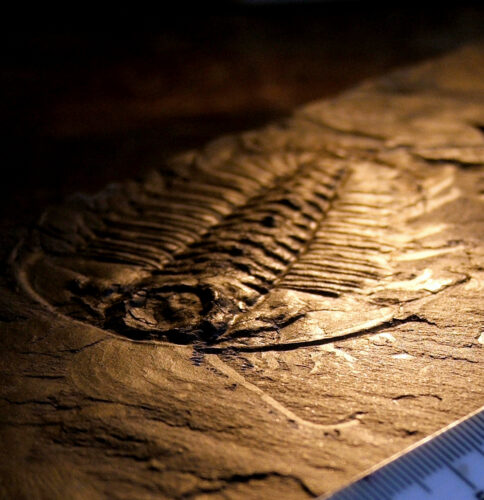Though Earth is over four billion years old, complex life only emerged on land about five hundred million years ago. For much of our planet’s history, the most developed forms of life were aquatic bacteria, with only a sliver of the intricacy of the animal kingdom that now dominates the Earth. So, why did complex life take so long to develop and emerge from its aquatic origins onto land?
The oldest life on Earth was bacteria, which appeared about three billion years ago. But prior to the Great Oxidation Event around two and a half billion years ago, when cyanobacteria began producing large amounts of oxygen, the planet was largely devoid of free oxygen. Without free oxygen, there was no protective ozone layer to cover Earth’s surface. The ozone layer is a region of Earth’s stratosphere that shields Earth from UV radiation, which can harm cells. Solar UV radiation can damage mitochondria, chloroplasts, and DNA, causing genetic mutations and preventing cells from producing energy. Without an ozone layer for protection, life remained confined to the UV-protected waters of Earth’s oceans.
Scientists previously assumed that before the ozone layer was established, there simply was not enough free oxygen to form a protective layer. However, new research conducted by a team of scientists led by Jingjun Liu (GSAS ʼ26) at Yale’s Department of Earth and Planetary Sciences sought to understand exactly how the ozone layer affected the timeline for the development of land-based life. “This very long delay was caused by a delayed stabilization in the Earth’s ozone layer,” Liu said. The team found the iodine cycle’s effect on the ozone is a more central component in the development of complex life on Earth than previously understood.
The iodine cycle is a biogeochemical cycle that moves iodine through Earth’s crust, mantle, bodies of water, and atmosphere. It occurs on Earth now as it did billions of years ago, though in different forms. Through naturally occurring processes, inorganic iodine gases discharge from the ocean to the atmosphere over time. When this iodine reacts in the stratosphere, it degrades ozone. In the present, iodine is responsible for about four percent of the ozone loss over the Antarctic ozone hole, the thinning of the ozone layer over Antarctica. In the Proterozoic era, from 2.5 billion to 540 million years ago, iodine was about 180 times more concentrated in the oceans than it is today. Liu’s team constructed an ocean-atmosphere model to reconstruct the iodine-ozone dynamics for the early Earth to understand the ozone depletion during the Proterozoic. They found this heightened level of iodine massively depleted the ozone layer, preventing the emergence of complex life on land by disrupting Earth’s protective shield. Even as oxygen levels rose due to the Great Oxidation Event, the constant breakdown of ozone by iodine delayed the formation of a consistent ozone layer. Over time, however, enough ozone did build up in the atmosphere to form the ozone layer—it only took two billion more years.
The stabilization of the ozone layer five hundred million years ago coincided with another event: the Cambrian explosion. During this period, multitudes of life forms like cnidarians (a group of organisms including modern jellyfish and coral), trilobites, and crustaceans appeared on Earth. Fossils of these creatures can be found in deposits like the Burgess Shale in British Columbia, Canada. The reason for complex life’s rapid appearance after billions of years has been debated for decades. “Of course, we have the Burgess Shale, but it doesn’t address this fundamental question of why there is no visible life before the Cambrian explosion. So, in that context, I think the ozone layer was something that people take for granted,” Liu said. This diversification of aquatic life eventually allowed for the emergence of life on land, once the ozone layer stabilized. While a new understanding of the stabilization of the ozone layer improves our understanding of Earth’s prehistory, there’s still more to uncover—for example, we do not yet understand how the ozone layer fluctuated. As researchers like Liu’s team continue to unravel the complex dynamics between Earth’s atmosphere and the evolution of life, the story of how complex life developed reminds us that even the smallest molecules—like iodine and ozone—can shape our planet’s future.

